China Association of Automobile Manufacturers Brake Committee holds seminar
2017-05-03
To promote the development of technology and products in China's automotive braking field, the China Association of Automobile Manufacturers Brake CommitteeOrganized the "Automotive Braking Technology and Product Development Trend Seminar" in Yantai, Shandong from June 25th to 26th, inviting domestic and foreign experts to introduce and exchange the development trends of automotive braking technology, the latest research results and new products, advanced production processes, technologies and equipment, and to carry out information exchange and cooperation between upstream and downstream enterprises, equipment industries and user industries.

This conference was hosted by China City ConstructionYantai Fuerkesen Automotive Parts Co., Ltd., with more than 160 units and nearly 300 people from automobile manufacturers, axle manufacturers, automobile chassis and brake R&D and production, brake-related raw material enterprises, universities and research institutes attending. This is more than twice the number of professional attendees at previous conferences. Moreover, the attendees covered the entire automotive brake industry chain. With the strong assistance of Fuerkesen, the invited speakers were all well-known experts and scholars in the automotive braking system and related fields, as well as members of enterprises with representative technologies and products. The leaders of the China Association of Automobile Manufacturers Brake Committee gave high praise to Fuerkesen's organizational ability for this seminar, which also demonstrates Fuerkesen's influence and voice in the industry.
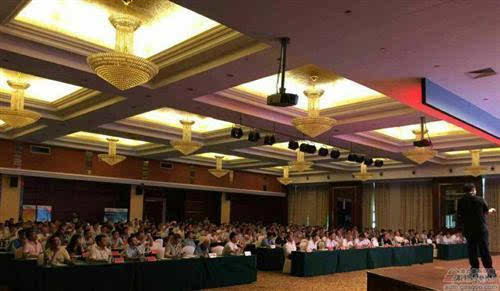
Xia Shengzhi, assistant secretary-general of the China Association of Automobile Manufacturers, said in his speech that the automotive industry is an industry where new technologies are constantly emerging, so industry personnel need to constantly strengthen learning and exchanges to broaden their horizons. China is now the world's largest automobile producer, but not a strong automobile country. In the field of automotive parts, this problem is particularly prominent. As the China Association of Automobile Manufacturers Brake Committee, we try to invite all the experts, scholars, and especially entrepreneurs in the braking industry to discuss and exchange ideas, strengthen and promote cooperation, and promote the emergence of excellent independent Brands in the braking field. Xia Shengzhi also pointed out that China's automotive industry has entered a period of transformation from quantity to quality, and China's automotive industry's 13th Five-Year Plan may include special funds to support the improvement of the quality of parts. He encouraged all brake-related enterprises to pay attention to changes in industry trends and industrial policies, and to grasp and make good use of government policy support.
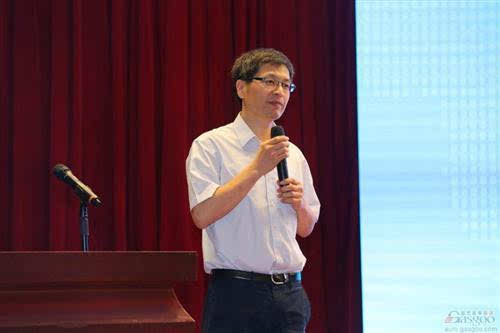
Xia Shengzhi, assistant secretary-general of the China Association of Automobile Manufacturers
As a co-organizer of this conference, China City ConstructionYantai Fuerkesen Automotive Parts Co., Ltd. has been pursuing innovation since its establishment in 2009, and has achieved a transformation from a friction material enterprise to a comprehensive automotive braking system parts enterprise engaged in the R&D and production of brake assemblies and axles. Zha Jianping, CFO of the global management headquarters of China City Construction (China Urban Construction Holding Group Co., Ltd.), pointed out that manufacturing is the driving force and engine of national development, so China City Construction also regards manufacturing as an important part of the group's development strategy. Investing in Fuerkesen is part of this strategy, and it will continue to support the development of the automotive manufacturing and parts industries in the future. Fuerkesen's ability to become a co-organizer of the seminar of the China Association of Automobile Manufacturers Brake Committee shows that it has been recognized by the committee and the industry, and also shows its ambition for future development in the automotive braking field.
The first day of the seminar was dedicated to technical presentations and exchanges, and the second day was a special interactive exchange meeting. As mentioned earlier, the speakers, scholars, and enterprises represented the leading professional level in the industry. Attendees said that this seminar did touch upon the key core technologies of automotive braking, the analysis and judgment of trends were in-depth and comprehensive, and the academic discussion atmosphere was strong, which broadened everyone's understanding and vision. In addition, a very key point is that this conference provided an interactive platform including industry experts, scholars, and braking system industry chain enterprises, facilitating multi-faceted and in-depth exchanges. According to the seminar evaluation forms collected on-site by Fuerkesen, the attendees expressed satisfaction and praise for the organization, topics, and various reception work of this conference, and said that they would continue to pay attention to and participate in this conference.
Qi Gang, senior manager of Shanghai General Motors Pan Asia Technical Center's"Development Trend of Braking System Technology and Industrial Development Needs" speech analyzed the impact and requirements of the four major automotive development trends of energy saving, environmental protection, intelligence, and interconnection on braking system technology. Taking energy saving as an example, he believes that reducing braking system drag (low friction, active return, performance balance), energy recovery (appropriate energy recovery, balance between energy recovery and braking performance, stability of energy recovery), and lightweight design (application of aluminum, resin, fiberglass reinforced, carbon fiber new materials; optimization of booster, caliper, brake disc, and handbrake structure) are the technical responses and innovations that the braking system needs to make in the face of this trend. Intelligence is also a major trend that will have a significant impact on braking systems. Driver assistance and autonomous driving include three levels: perception, control, and execution. As an important safety system of automobiles, the braking system needs to invest a lot in the research and development of mechatronic actuators, new functions, and the integration and coordination of new combinations.
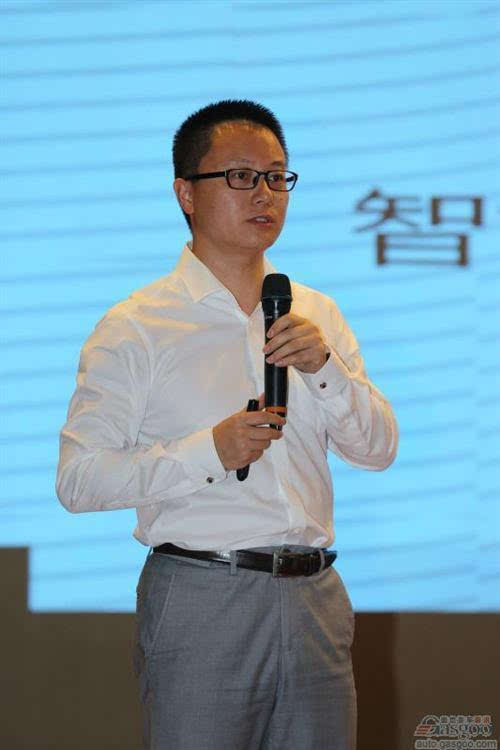
Qi Gang, senior manager of Shanghai General Motors Pan Asia Technical Center
Liu Zenggang, a national "Thousand Talents Plan" expert, and Yi Li from CanadaPACBRAKE company conducted a comprehensive and in-depth analysis of the necessity, technical classification, applicable application scenarios, current progress, and challenges of commercial vehicle auxiliary braking, which was a comprehensive and in-depth technical exchange on commercial vehicle auxiliary braking. Liu Zenggang pointed out that auxiliary braking is a special and necessary technology for commercial vehicles. The classifications and corresponding applications of buffer technologies are: eddy current retarders (rear-mounted, mid-mounted, air-cooled, liquid-cooled), hydraulic retarders (parallel, series), and engine braking (exhaust valve braking, exhaust braking, compression braking). These three buffering technologies have their own applicable scenarios. Liu Zenggang and Yi Li both pointed out that engine braking alone cannot meet the requirements of commercial vehicle braking, and in many North American cities, the use of engine braking at low speeds is prohibited because the noise generated will disturb residents. For the future development trend of auxiliary braking devices, Liu Zenggang conducted an analysis from the perspective of "making the most of strengths and avoiding weaknesses": eddy current retarders have fast braking response and excellent low-speed performance, and need to reduce thermal decay and weight; hydraulic retarders have small thermal decay and light weight, and need to reduce procurement and maintenance costs and reduce friction oil pollution; engine braking has low cost and light weight, and needs to increase braking power and reduce braking noise. Liu Zenggang particularly pointed out that, regarding the relevant standards for highway buses and trucks, highway buses longer than 9 meters and trucks with a total mass greater than 12 tons should be equipped with retarders or other auxiliary braking devices. This regulation has been in effect since September 1, 2012, but it has not yet been implemented. Liu Zenggang expressed concern about the lack of auxiliary braking devices on various seriously overloaded commercial vehicles on Chinese roads and other commercial vehicles with unique Chinese usage scenarios.
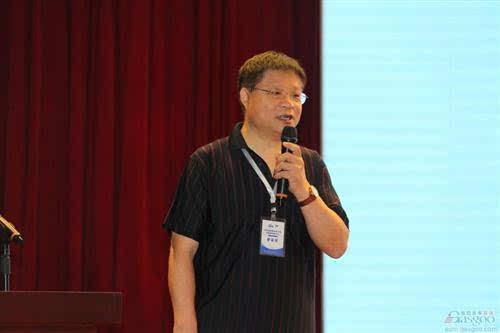
Liu Zenggang, a national "Thousand Talents Plan" expert
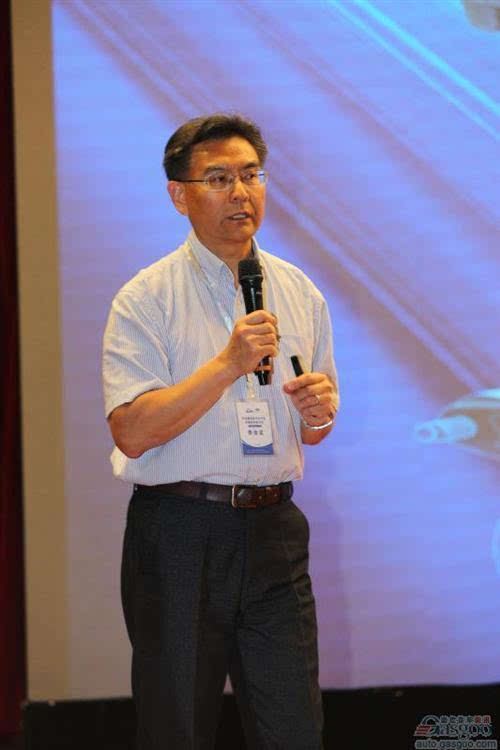
CanadaYi Li from PACBRAKE company
Dr. Gao Bolin from the China Automotive Technology Research Center gave a presentation onIn a keynote speech on the topic of “ESC/AEB Testing Methods Based on Driving Robots”, he introduced the classification of active safety tests: Longitudinal assistance includes ACC/FCW/AEB identification and intervention capabilities; Lateral assistance includes LDW/LKA/BSD identification and intervention capabilities; Stability control includes ABS/TCS/ESC stability and drivability. In addition, he also introduced Euro-NCAP/C-NCAP AEB testing based on function & performance, and testing based on scenarios & functions. Because test conditions are affected by the driver, the China Automotive Technology and Research Center introduced driving robots (to reduce uncertainty) and simple test conditions (to improve repeatability). The AEB automatic emergency braking performed by the robot includes tests on stationary obstacle vehicles and moving obstacle vehicles.
Continental Automotive Braking Systems Co., Ltd. conducteda presentation on “Analysis and Optimization of Brake Noise”; Ningbo GELUBO Co., Ltd. gave a presentation on “Application and Development of Automotive Electronic Braking Technology and Intelligent Driving Systems”. In addition, the presentations on the first afternoon focused on the friction materials, manufacturing processes, and the introduction of the new GB5763 standard and test methods used in brakes, brake pads, and calipers. Professor Wang Tieshan of Jilin University Electromechanical Equipment Co., Ltd. pointed out that there are currently 452 registered and licensed automotive friction material manufacturers in China, of which about 4 have a production capacity exceeding 10 million sets, about 10 have a capacity of 5 to 10 million sets, about 30 have a capacity of 2 to 5 million sets, and the rest are small companies with less than 2 million sets. Regarding the development trend of the automotive friction material industry, Wang Tieshan analyzed it as follows: gradually shifting towards mid-to-high-end products, increasing the proportion of domestic sales, and reducing export share; market adjustment, technological upgrading, and a new round of investment competition are catalysts for eliminating backward production capacity. It is expected that the total number of enterprises will be reduced by 50% within 10 years.

Yu Xuegui, Shanghai Continental Automotive Braking Systems Sales Co., Ltd.

Amte (China) Chemical Co., Ltd.Mr. Matthias Hoch
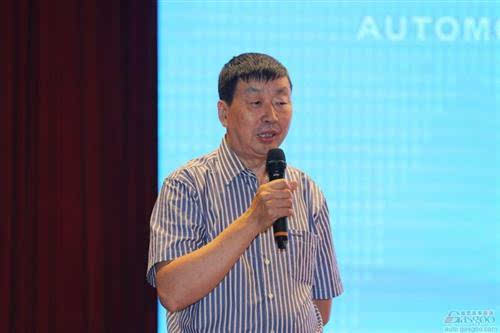
Wang Tieshan, Jilin University Electromechanical Equipment Co., Ltd.
As the host, after the first day's conference presentation agenda, Frexon organized the participants to visit its company located in Penglai Development Zone. The visitors were dividedinto 6 groups, each led by a Frexon staff member, and visited its various production workshops, technology center, laboratories, and technology and product exhibition halls. According to Frexon staff, Frexon covers an area of 371 mu and has built a comprehensive automotive braking system parts production base with a production capacity of 8 million sets of friction materials, 600,000 sets of brake actuators, and 200,000 axles. Products have passed safety and environmental protection certifications such as American AMECA, NSF, and European ECE-R90, and are supporting suppliers for many domestic passenger car and new energy vehicle companies. The company has introduced advanced production equipment from Germany, Italy, Austria, Japan, and South Korea, as well as domestically leading automatic assembly lines with online detection and correction functions. A technology research and development center has been established, mainly based on a full range of American LINK testing equipment, with the ability to test physical and chemical analysis, precision size, characteristic properties, and comprehensive performance. In addition to the advanced equipment, production capabilities, and orderly organized visits, what impressed the visitors even more was the TPS lean production management that runs through all aspects of the company, which is inseparable from the efforts of the management team composed of industry experts.
The second day's agenda included a large-scale thematic interactive exchange and small-scale thematic interactive exchanges, mainly discussing the hot topics of concern to the participants, divided into a leadership expert group, a brake axle group, and a friction material parts group. Compared with the keynote speeches on the first day, this arrangement made the interaction among participants more targeted and more in-depth and effective.
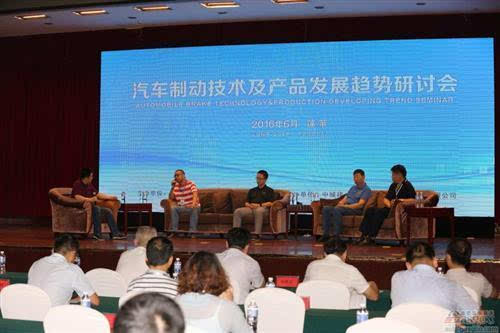
On-site interaction on technical topics
The “Symposium on Automotive Braking Technology and Product Development Trends” was successfully concluded with the strong assistance and support of Frexon. Relevant leaders of the China Automotive Industry Association Brake Committee expressed their intention to cooperate with Frexon for a long time, utilize local government resources, and hold an annual braking technology forum.
Previous Page:
Next page:
Related Articles






